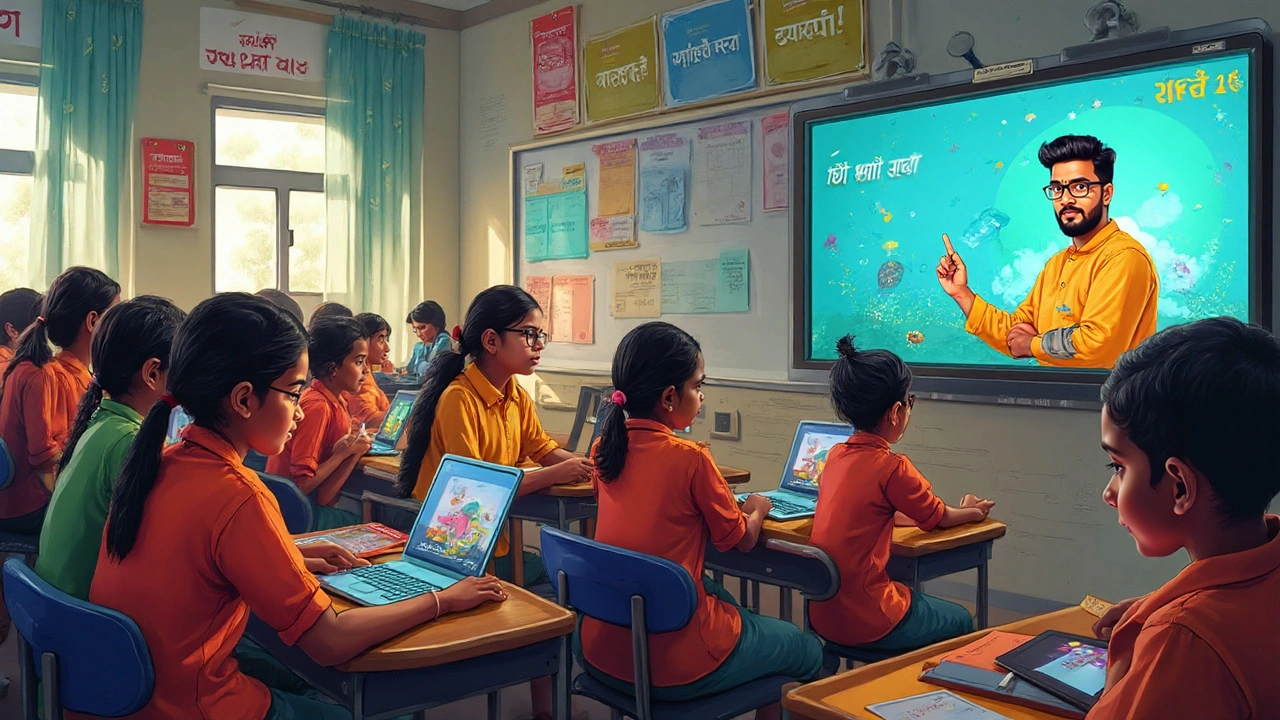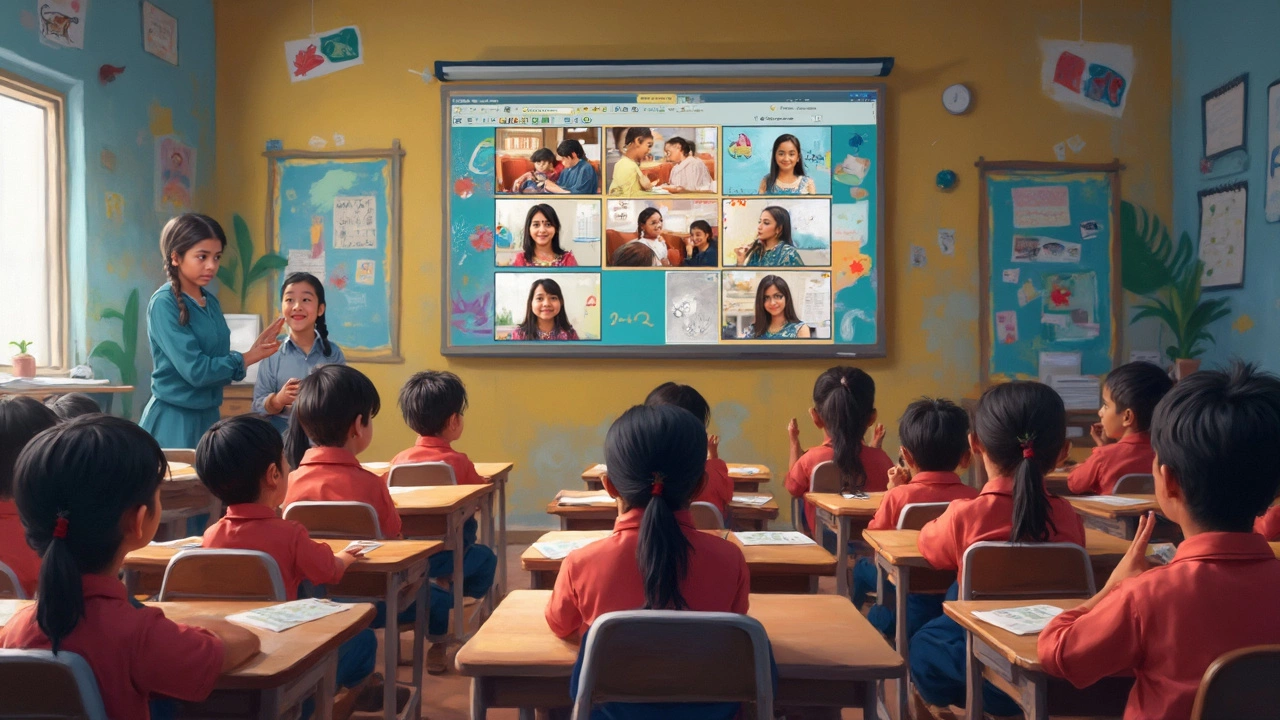Digital Learning: What It Is and Why It Matters
Digital learning means using the internet, apps, and video tools to study instead of only sitting in a classroom. It lets you grab lessons on a phone, laptop, or tablet whenever you need them. No more missing school because of a rainy day or a long commute. You get the same syllabus, often with extra videos and quizzes that make tough topics easier to understand.
In the last few years, India has seen a huge jump in online education. Millions of students now log into platforms for extra practice, revision, or full‑time courses. The COVID‑19 lockdown gave a clear signal: digital tools can keep learning alive when walls close. Today, even after schools are back, students keep using these tools because they add speed, flexibility, and a bit of fun to study.
Top eLearning Platforms for Indian Students
Platforms like BYJU'S, Unacademy, and Vedantu dominate the market with interactive video lessons and live doubt‑clearing sessions. International sites such as Coursera, edX, and Khan Academy also have a solid fan base, offering free courses from top universities and affordable certifications. What matters most is how each platform fits your goal—whether you need a quick revision for JEE, a deep dive into data science, or a language boost for IELTS. Most of them let you track progress, earn badges, and join study groups, making learning feel like a community.
Effective Digital Learning Models
Not every online class works the same way. Blended learning mixes face‑to‑face teaching with digital content, so you still get teacher guidance but can review videos at home. The flipped classroom flips the script: you watch a lesson first, then use class time for problem‑solving and discussion. Self‑paced courses let you move as fast or slow as you like, which is perfect for working professionals or anyone juggling multiple commitments. Pick the model that matches your schedule and learning style.
To get the most out of digital learning, set a dedicated study corner, keep a regular timetable, and treat online sessions like real classes—turn off distractions and take notes. Use active recall: after watching a video, close it and try to explain the concept out loud or write a quick summary. Combine digital practice with offline worksheets or mock tests; the mix reinforces memory and builds exam stamina.
Looking ahead, digital learning won’t replace teachers but will become a permanent sidekick. New technologies like AI‑driven tutors and AR labs promise even richer experiences. For now, start small: pick a reliable platform, choose a model that fits you, and stick to a routine. Soon you’ll see how the right digital tools can turn a tough syllabus into a manageable, even enjoyable, journey.
What is eLearning Called? Understanding Modern Learning Terms & Platforms
Explore what eLearning is called, why the term matters, and how it shapes modern education. Dive into current trends, tools, and best practices for digital learning.
read moreSchools Dropping Google: What's Behind the Shift in Education Apps?
Are schools saying goodbye to Google? Uncover the reasons behind this shift and what new digital classrooms look like in 2025.
read moreIs E-Learning Just an App? The Truth Behind Modern Digital Education
Is e-learning more than an app? Dive into what e-learning really means and discover how modern digital education goes way beyond your phone.
read moreAre Virtual and eLearning the Same? Exploring Key Differences
Virtual learning and eLearning are often confused, but they have distinct characteristics. Virtual learning typically involves real-time, interactive experiences similar to a classroom setup, often using tools like video conferencing. eLearning, on the other hand, is usually self-paced, involving pre-recorded lectures and online assignments that can be accessed any time. Understanding these differences can help you choose the right method based on your learning style and needs.
read moreUnpacking Digital Learning Platforms: A Deep Dive
Digital learning platforms have transformed education by offering flexible, accessible courses online. These platforms range from traditional learning management systems to interactive, specialized applications that cater to varied learning needs. Learners and educators alike benefit from customizable tools, but choosing the right platform can be overwhelming. This article explores what digital learning platforms are and provides tips for navigating this digital educational landscape.
read moreHow to Build Your Own Successful eLearning Platform
Creating an online eLearning platform requires a clear understanding of digital tools and a focus on instructional design that caters to various learners. Aspiring course creators should consider content quality, platform accessibility, and user engagement to provide a high-quality educational experience. Essential steps include defining the target audience, selecting a suitable technology stack, and creating interactive and adaptive content. Constant evaluation and updates are crucial to keeping the content relevant. This article offers a guide on the necessary steps to develop a platform that stands out.
read more




